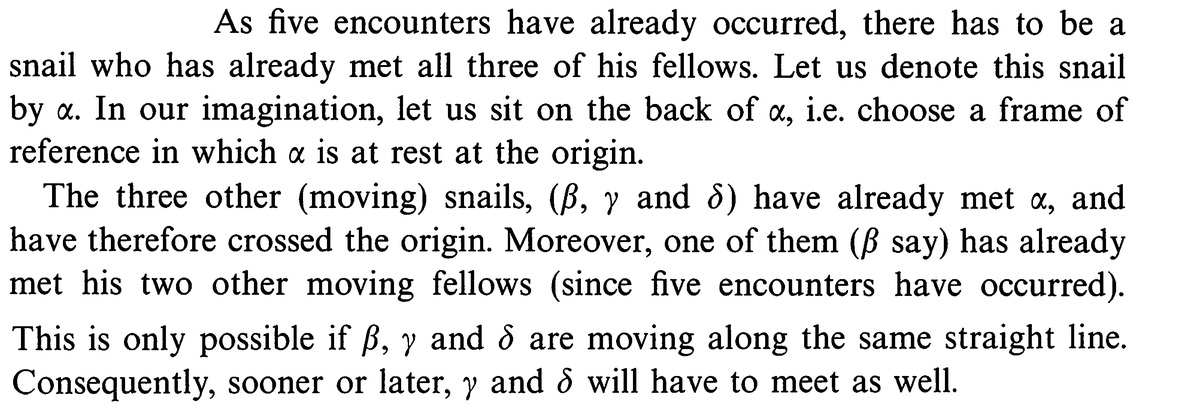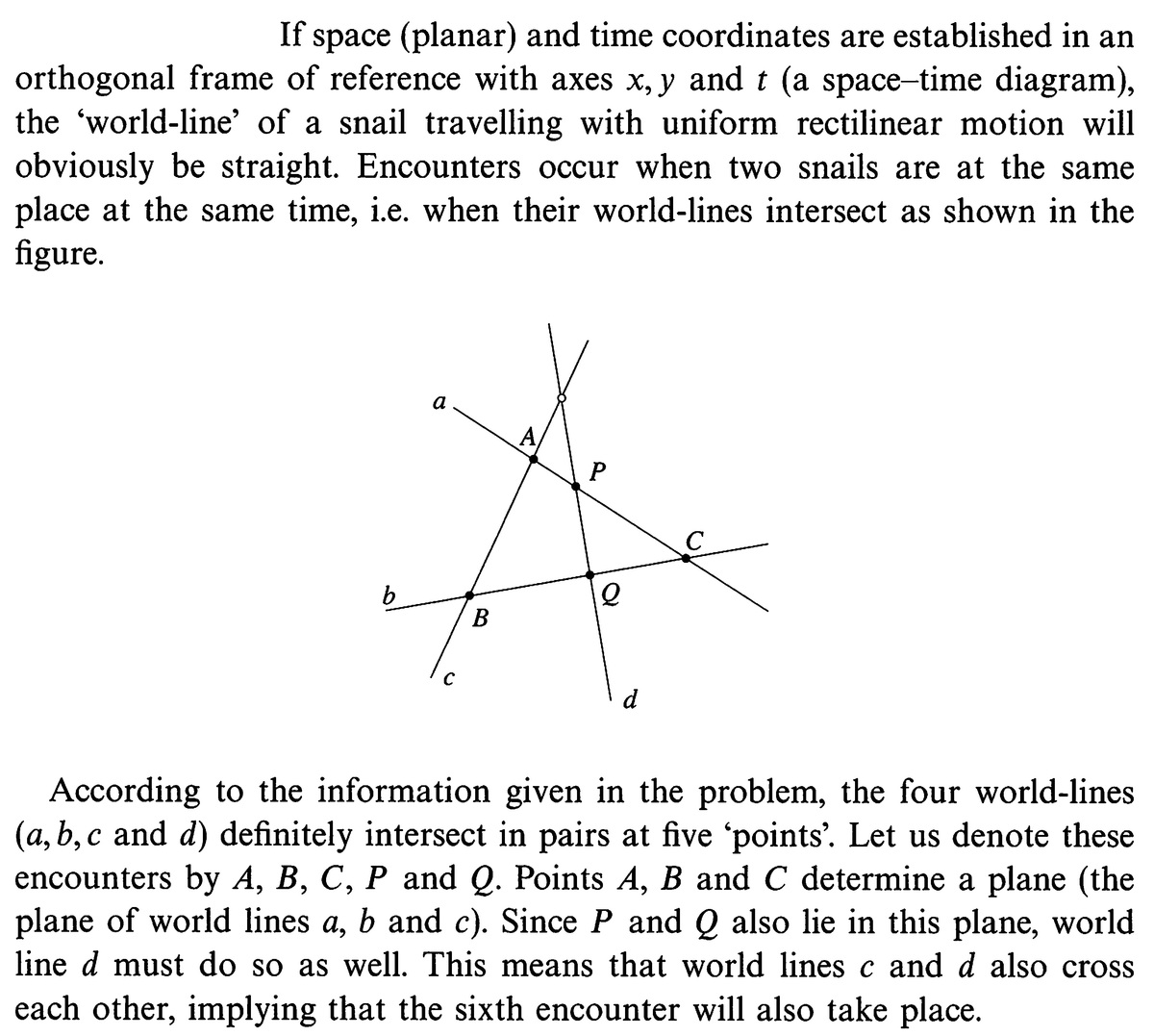Oh! Snails
Four snails travel at uniform, rectilinear motion on a very large plane surface. The directions of their paths are random, (but not parallel, i.e. any two snails could meet), but no more than two snail paths can cross at any one point. Five of the possible encouters have already occured. Can we state with certainty that the sixth encounter will also occur?
This question is not original.
This section requires Javascript.
You are seeing this because something didn't load right. We suggest you, (a) try
refreshing the page, (b) enabling javascript if it is disabled on your browser and,
finally, (c)
loading the
non-javascript version of this page
. We're sorry about the hassle.
There are two solutions:
First One:
Second One: